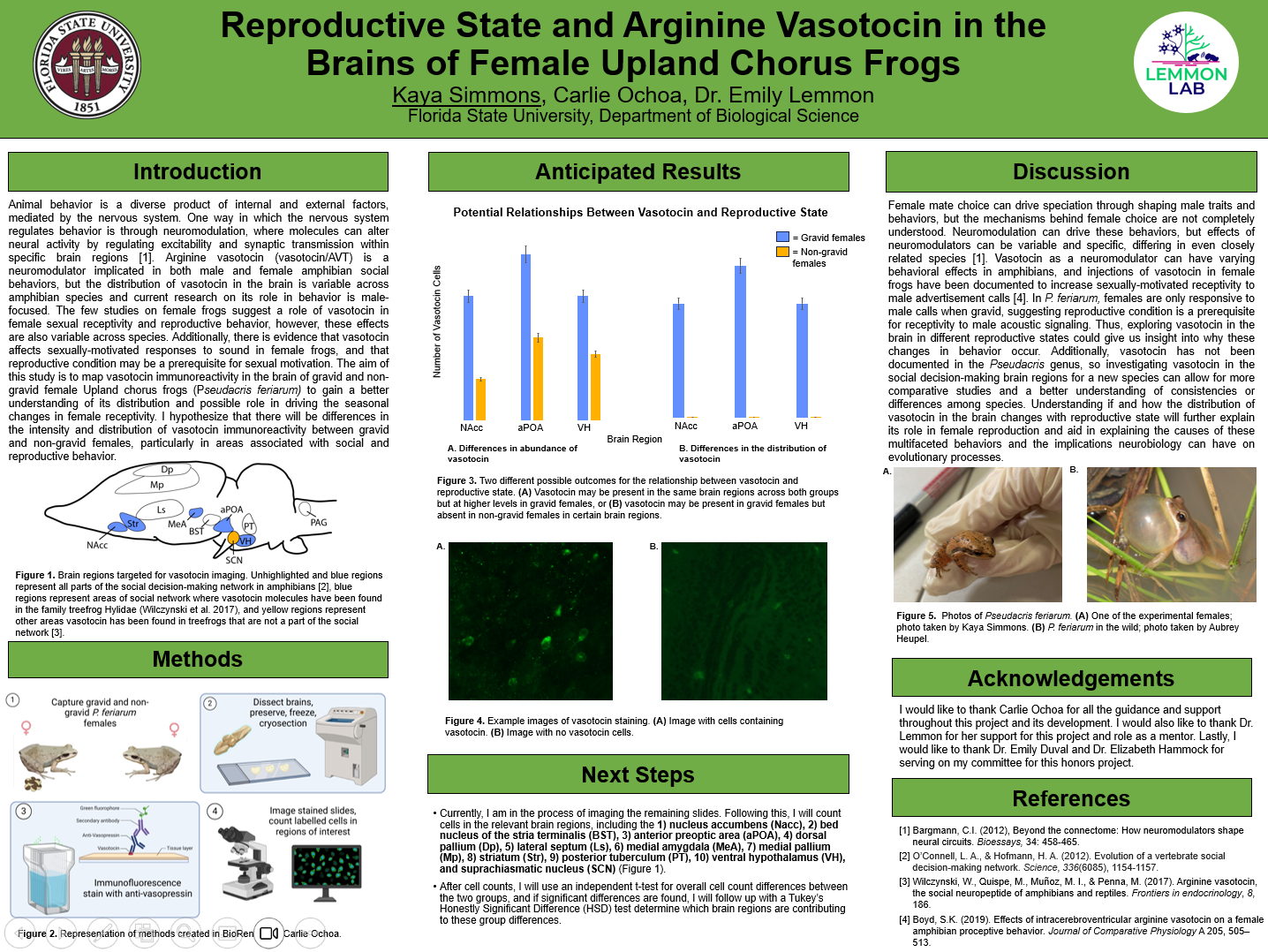Research Symposium
25th annual Undergraduate Research Symposium, April 1, 2025
Kaya Simmons Poster Session 4: 3:00 pm - 4:00 pm/ Poster #118

BIO
I am a third-year neuroscience major interested in non-human behavioral biology, behavioral ecology, and neuroethology. I have been conducting research since my first semester at FSU, and plan to continue doing so for the rest of my time as an undergraduate. Outside of this project and my work in the Lemmon lab, I work in the DuVal lab investigating complex cooperative mating behavior in a tropical bird, as well as lead a project sampling fatal bird-window strikes on the FSU campus. Once I graduate, I plan to complete a PhD and pursue research in animal behavior full-time.
The relationship between reproductive state and arginine vasotocin in the brains of female Upland chorus frogs (Pseudacris feriarum)
Authors: Kaya Simmons, Dr. Emily LemmonStudent Major: Behavioral Neuroscience
Mentor: Dr. Emily Lemmon
Mentor's Department: Biological Sciences Mentor's College: Florida State University Co-Presenters:
Abstract
Neuromodulation, the process by which signaling molecules alter neuronal activity, can regulate behavior by changing neural or physiological responses. Vasotocin is hormone that can act as neuromodulator and is highly implicated in both male and female amphibian social behaviors. The physical distribution of vasotocin in the brain is highly variable across amphibian species. Current research on the role of vasotocin in behavior is largely focused on males. However, studies on female frogs across genera suggest a strong role of vasotocin in female proceptivity and reproductive behavior. Specifically, vasotocin affects female proceptivity to male acoustic signals, which is a prerequisite for sexual motivation during female mate choice. The aim of this study is to map vasotocin immunoreactivity in the brains of gravid and non-gravid female Chorus frogs (Pseudacris feriarum) to gain a better understanding of its distribution and possible role in driving the seasonal changes in female receptivity. We extracted brains from 12 wild-caught frogs, including 6 females in reproduction condition (with eggs) and 6 females in non-reproductive condition (without eggs) and used immunofluorescent staining to identify vasotocin distribution in target brain regions related to social behavior. We hypothesize there will be differences in the distributions of vasotocin between gravid and non-gravid females, particularly in areas associated with female reproductive behavior. This research will not only contribute to the body of work describing variation in the neuroanatomical distribution of this nonapeptide, but also reveal the more about the neural mechanisms that drive female social and reproductive behavior.
Keywords: Neurobiology, neuromodulation, reproductive behavior, immunohistochemistry


